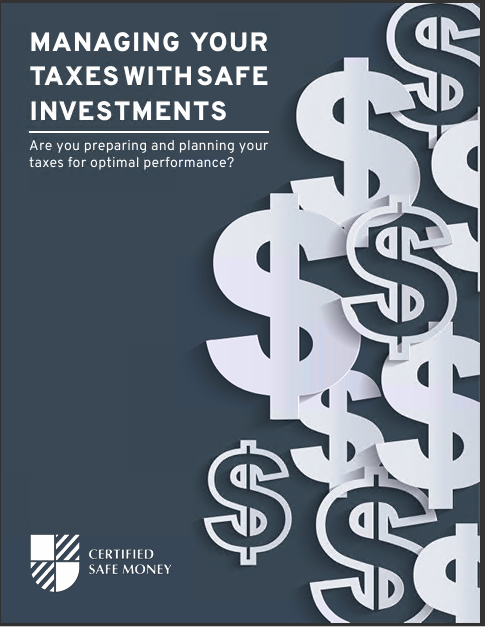Life Insurance Understanding Life Insurance Basics Can Save Loved Ones from Future Financial Hardship
Although most people don’t like to talk about it, planning for when you’re no longer here could mean the difference between your loved ones maintaining their current lifestyle or struggling financially for many years to come. That’s why understanding the basics about life insurance is essential for ensuring that those you care about will be able to carry on. In its most basic sense, life insurance is a contract between an insurance company and an individual whereby the insurer guarantees payment of a death benefit to a named beneficiary (or beneficiaries) upon the passing of the insured.
Why No Financial Plan is Complete without Life Insurance
Regardless of how well you have saved over the years, many changes can take place when an individual passes away. This is particularly the case if they are an income-earner who is relied on by others for some or all of their financial support. But income isn’t the only thing that can be replaced with proceeds from a life insurance policy. For instance, if the unthinkable were to occur to a stay-at-home spouse or parent, life insurance funds could be used to hire someone to take care of young children and cook, clean, and run necessary errands. The death benefit from a life insurance policy is received free of income taxation by the beneficiary, so the full amount of the proceeds can be used for a wide range of needs, such as:
- Funeral and other final expenses
- Paying off debts (such as a home mortgage, auto loans, or other financial obligations)
- Continuing to pay day-to-day living expenses (like food, utilities, and household needs)
- Future college costs for children or grandchildren
Find the most credible, highest-rated Safe Money advisors in your area.
If you are nearing retirement or already retired, you should consider safe money because your future is too bright to risk. function maxLengthCheck(object) { if (object.value.length > object.max.length) object.value = object.value.slice(0, object.max.length) } Are you a safe money expert?
Types of Life Insurance
While there are several different life insurance types available in the market today, there are two main categories. These are term and permanent. Each type of life insurance has advantages and drawbacks, based on an individual’s needs.
Term Life Insurance Term life is considered the most basic form of life insurance coverage. That’s because these policies consist of a death benefit that will be paid to a beneficiary (or to more than one beneficiary), provided that the policy is in force at the time the insured passes away. As its name suggests, term life insurance policies provide coverage for a set amount of time, or “term,” such as 10 years, 20 years, or even 30 years. Many life insurance companies also offer a 1-year renewable policy option. Because it offers death benefit protection only – without any cash value – term life insurance is typically very affordable. This is particularly the case if the insured is younger and in good health when he or she applies for the coverage. Some term life insurance policies offer the option to “convert” to a permanent form of life insurance policy – and in some cases, the insured does not have to take a medical exam or provide proof of insurability. While term life insurance may not be a good fit for all needs, it can be beneficial if someone is seeking “short term” coverage, such as for the payoff of a home mortgage and/or the promise that education funds will still be available for a child or grandchild, even if the insured passes away. Term life insurance can also provide a way for those on a budget to secure financial protection for their loved ones.
Pros and Cons of Term Life Insurance Term life insurance is known for its affordability. But even so, this type of life insurance is not the right fit for everyone. So, it is important to determine your coverage objectives first with a wealth planner and then decide whether or not this is the best way to protect those financial needs.
Term Life Insurance Pros and Cons
Advantages of Term Life Insurance Disadvantages of Term Life Insurance Lower premiums (usually) than a comparable amount of permanent life insurance Policies have an end date / coverage expires after a set amount of time Proceeds are income-tax-free to beneficiary Premium will usually increase if renewed for another “term” Easy to understand No savings / cash value Policy holder only pays for the coverage that is needed (without other “bells and whistles”) Premiums are “lost” if the policy is cancelled or expires Permanent Life Insurance Permanent life insurance consists of two policy components. These include a death benefit and cash value. Unlike term life, permanent insurance does not have an “end date.” Rather, these policies will typically continue for the remainder of the insured’s life, as long as the premium is paid. A permanent policy will usually cost more than a term life insurance plan, with all other factors being equal. This is because a portion of the premium goes towards the cost of insurance, and another portion goes towards the cash value. The funds inside the cash value of a permanent life insurance policy are allowed to grow on a tax-deferred basis. This means that there is no tax due on the gain unless or until the funds are withdrawn. Tax-free loans may also be taken from the cash component of permanent life insurance. These funds may be used for paying off higher-interest loans or even for supplementing retirement income. (If the loan is not paid back before the insured passes away, a portion of the death benefit will be used for doing so. The remainder of the death benefit, if any, will then be paid to the beneficiary). There are several different types of permanent life insurance, including:
- Whole Life Insurance – Whole life is the simplest form of permanent insurance and is intended to remain in force until the insured passes away or until the policy matures. This type of plan offers a minimum guaranteed death benefit – and once approved for coverage, the insured won’t have to re-qualify in order to keep the policy going. The premiums on a whole life insurance policy will typically remain the same over time – even as the insured gets older (and possibly even contracts an adverse health condition). “Participating” whole life insurance policies may pay dividends to policyholders. These are considered a return of excess premium, and as such, they are not taxable to the recipient.
- Universal Life Insurance – Universal life insurance also consists of a death benefit and a cash value component. These policies are considered more flexible than whole life because a universal life insurance policyholder can (within certain guidelines) change the amount and timing of the premium, as well as the death benefit. They can also shift money between the insurance and the cash value components of the policy. Similar to with whole life, a universal life insurance policyholder may withdraw or borrow funds from the cash value. Likewise, the cash value is allowed to grow tax-deferred.
- Variable Life Insurance – Variable life insurance is a type of permanent life insurance policy that has a death benefit, as well as an investment component. Funds can be invested in a variety of “sub-accounts.” This provides the opportunity for the policy’s cash value to obtain market-linked returns. However, there is also the risk of loss if the underlying investments perform poorly.
- Variable Universal Life Insurance – Variable universal life insurance provides a death benefit, along with flexible terms and investment options. Within certain limits, the policyholder may change the death benefit, as well as the timing and the amount of the premiums. These policies also allow the opportunity for higher, market-linked returns on the cash value, as compared to a whole life policy. However, the investment component of the policy could also fall to zero if the funds perform poorly over a given time. Due to the potential for volatility in the cash value component, variable life and variable universal life insurance policies may not be suitable for those who have a low tolerance for risk and who want to keep their funds safe.
- Index Universal Life Insurance – Index universal life insurance, or IUL, allows the policyholder to allocate cash value funds to an equity index or a fixed account. The return on the cash value is based primarily on the performance of an underlying market index, such as the SP 500. If the index performs well, the cash value is credited with a positive return – usually up to a set maximum, or “cap.” However, if the index performs negatively, the cash value will not sustain a loss but rather is simply credited with a 0% return for that period.
Some permanent life insurance policies will also provide “living benefits,” which can be accessed while the insured is still alive. For instance, if the insured is diagnosed with a terminal illness or has to reside in a nursing home, some – or even all – of the policy’s death benefit proceeds may be available, penalty-free, to use for these or other needs.
Pros and Cons of Permanent Life Insurance
Pros and Cons of Permanent Life Insurance
Advantages of Permanent Life Insurance Disadvantages of Permanent Life Insurance Can remain in force for the rest of your life (provided the premium is paid) It is typically more expensive than term life insurance – at least initially Premium is usually locked in, so it won’t increase Cash value could be at risk (with variable or variable universal life) Builds up cash value Tax-deferred growth Income tax-free death benefit May offer living benefits
How Much Life Insurance Do You Need?
Your need for life insurance can vary, depending on your financial obligations and your age, as well as whether or not anyone depends on you for financial support. For instance, a young family would typically require life insurance to protect the children’s lifestyle and care needs if one or both of the parents were to pass away. Likewise, an older couple may also need life insurance – even if their children are grown and supporting themselves financially. In this case, funeral and other final expenses need to be considered and the ongoing income needs of the surviving spouse. The amount of life insurance coverage you need can depend on many different factors. These can include:
- Anticipated funeral and other final expenses
- Unpaid debts
- Survivors’ living expenses
- Other financial resources available to survivors
- Other life insurance coverage in force
How Much Does Life Insurance Cost?
The premium for life insurance coverage can also depend on a variety of factors, such as the:
- Type and amount of coverage
- Length of coverage (for term life insurance)
- Insurance company offering the policy
- Insured’s age, gender, health, and family health history
- Whether or not the insured is a smoker
Although there are many life insurance cost calculators available online, it is typically best to find a financial professional and discuss your specific needs to help you to narrow down the best type of policy and coverage amount for you.
Will You Qualify for Life Insurance?
If you have certain health issues that could disqualify you for traditionally underwritten life insurance, it might seem that protection needs will go uncovered. However, even if you have been turned down for life insurance coverage, you could still have other options to secure the financial protection that you need for your loved ones. For instance, a guaranteed issue life insurance policy does not require health qualification. Most people who apply for guaranteed issue life insurance cannot be turned down. So, as long as the premium is paid, the coverage will remain in force. Because of the added risk that an insurance company takes on with guaranteed issue policies, the premium will typically be more than that of a comparable fully underwritten policy. Likewise, the amount of coverage may be lower. Because guaranteed issue life insurance policies don’t typically require medical underwriting, these plans can oftentimes be issued much more quickly – in some cases on the very same day that you apply.
How to Find the Best Life Insurance for Your Needs
If you’re looking for the best life insurance for your specific coverage needs and objectives, it is recommended that you first talk with an insurance specialist who can help you with narrowing down the right policy for you. In addition, a life insurance expert may also be able to assist you with comparing multiple policies, coverage options, and premium quotes.













